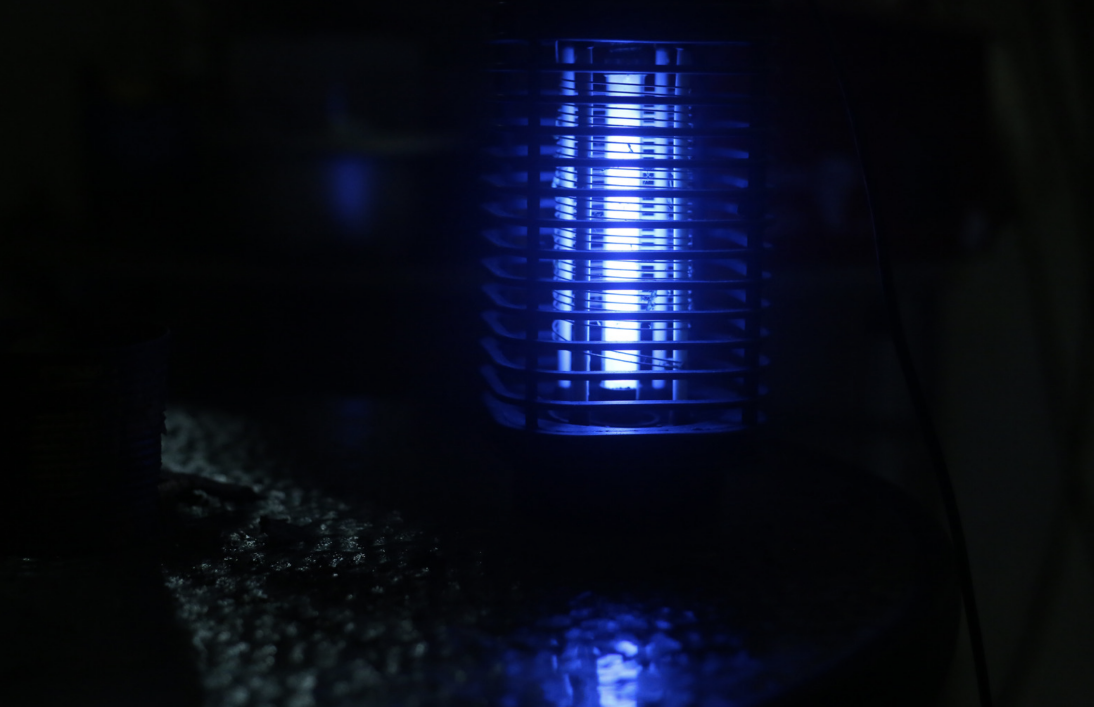While there are lots of mosquito traps on the market, the truth is, their effectiveness largely depends on your location and the species of mosquitoes which you are battling. Some species respond differently to certain lures and learning what works and what doesn’t work in your area can really help up your catch rates!
In this article, we’re going to talk about how to get started with making your own custom attractants for your bug zapper or mosquito trap. First though, let’s talk about what attracts mosquitoes!
How To Attract Mosquitoes To Your Traps
Mosquito traps function on the basic principal of mimicking a living host in order to trick mosquitoes. That means that we’re looking at things like heat, CO2, and smell to trick these bugs into thinking they will get a meal.
Mosquitoes are attracted when we exhale breath (CO2), to our body heat, and to smells like body odor or sweat that would indicate the presence of a mammal host body which they then zero in on in order to feed.
The easiest way to mimic these indicators, of course, is to buy a dedicated mosquito trap, like the Mosquito Magnet, which takes care of the harder parts for you, like heat, light, scent, and CO2.
However, there are some clever ways to do this yourself in order to make a cheaper trap more effective, or to catch mosquitoes with stuff you have at home.
Best Homemade Mosquito Attractant For Bug Zapper
Homemade CO2 Attractant
While it seems like it would be difficult or even dangerous to make a CO2 trap at home, there are some surprisingly simple ways to do it. You probably even have all the stuff you need in your pantry! This simple trap uses only basic household items to get the job done.
You’ll need:
- 2 Liter Bottle
- 1/4 Cup Sugar
- 1 Gram Yeast
- Cut the bottle in half
- Heat up your water, allowing the sugar to dissolve in it.
- After it has cooled, pour it into the bottle’s bottom half, and then add the yeast on top of it. This creates the carbon dioxide reaction.
- Remove the cap from the top of the bottle, and then flip the top half upside down. Push it into the bottom half to make a sort of funnel, and then tape both pieces together to complete the trap.
Make sure to put the trap in a shaded area, as mosquitoes don’t like to be in direct sunlight. You’ll also need to put this a good distance away from where you and your party guests or camp site will be. The idea is to present an alternative to the mosquitoes. If the trap is too close to where you will be then all you’re doing is leading them to the buffet!
Pesky biting bugs will enter the top of the bottle, and then drown in the water when they can’t escape. You can empty and re-use this trap every two weeks or so, or as needed. Or, you can set it up near a bug zapper if you have one to lure them into it.
Dry Ice Attractant
The CDC actually uses this method to catch female mosquitoes for testing and research purposes. However, it could be easily adapted to be used with a bug zapper to kill these mosquitoes as well.
While it’s not quite as convenient as the first method, it does work better for longer range capture because the dry ice puts out a lot more CO2 than the yeast mixture, and it’s a pretty easy trap or attractant to make as well.
It’s made using dry ice and a small one gallon cooler. One of the little round ones for drinks works well. Using the cooler helps maintain the ice longer.
You’ll need:
- Dry Ice
- One Gallon Cooler
- Drill some holes in the bottom of your 1 gallon cooler.
- Place 5 lbs. of dry ice inside the cooler.
- Hang the cooler above your bug zapper
As your dry ice starts to evaporate, the CO2 will filter out of the holes in the bottom of the cooler. This will then attract the mosquitoes, who should run right into the bug zapper as they try to get to the dry ice.
The finished version of the trap, which the CDC uses, includes a small battery operated fan which hangs beneath the cooler and sucks the hovering mosquitoes into a catch bag for collection. You can easily do this as well if you prefer it to the bug zapper, or if you need a trap that works where you don’t have electricity, such as for primitive camping or fishing trips.
Keep in mind though that an unbroken chunk of dry ice (5 pounds) will last approximately 18-24 hours inside a cooler before it will need to be replaced.
Vinegar and Limestone Attractant
While vinegar and baking soda mixtures fizzle quickly, there is another way to use vinegar which has more merit. Scientists have found that mixing natural carbonate materials like crushed sea shells or limestone with vinegar becomes and effective CO2 lure for mosquitoes.[1]https://www.sciencedaily.com/releases/2015/07/150702104232.htm
These work the same way that baking soda and vinegar does, but the limestone and shells are much longer lasting – making them a more viable solution for traps.
Try mixing limestone or crushed sea shells into a bucket with vinegar and then hanging your bug zapper over it. The mosquitoes should come towards the bucket and run into the bug zapper on their way to find the CO2.
Note: This works better if you elevate the bucket on a small table to get it off the ground, as mosquitoes are more likely to be trapped higher up.
In closing, CO2 is the most commonly used attractant for mosquitoes because it’s so effective. However, they are attracted to other things like light, scent, and heat as well.
You can experiment with adding floral scents (like perfume) near the trap, or some people even use sweaty socks to attract mosquitoes with body odor!
In addition, you can try to make the area where the people are at less attractive by using scents mosquitoes hate there, like citronella plants or candles, lemongrass, and peppermint.
References
| ↑1 | https://www.sciencedaily.com/releases/2015/07/150702104232.htm |
|---|

